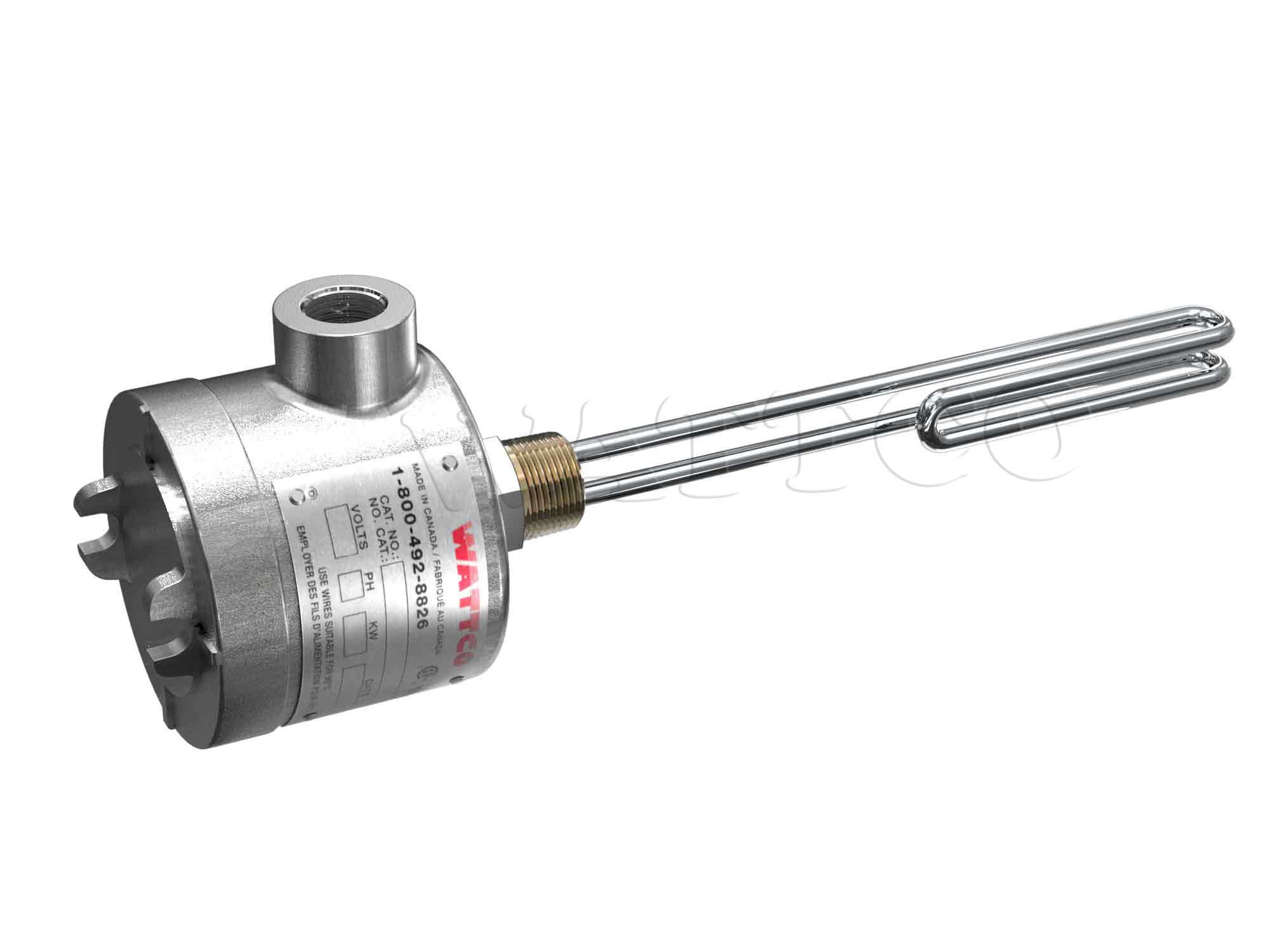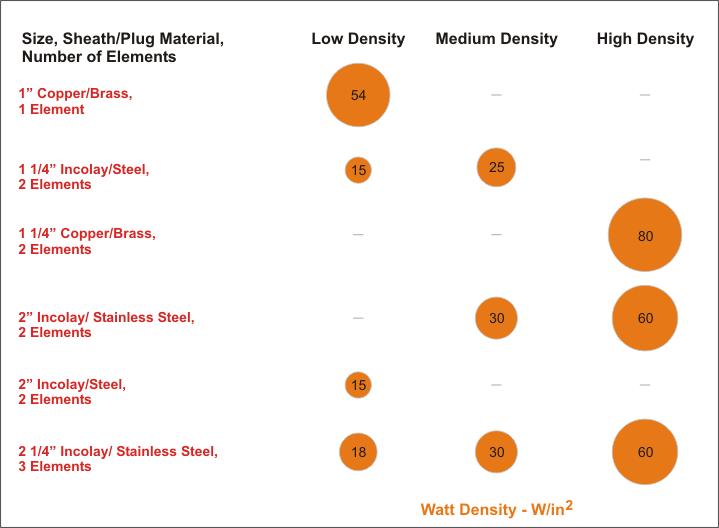What are screw plug heaters
WATTCO delivers a series of screw plug immersion heaters for process heating of liquid and gas in tanks and vessels.
 The WATTCO screw plug immersion heaters have hairpin tubular elements and are manufactured by welding or brazing these tubular elements into a screw plug. These screw plug heaters come with different operating voltages, power (kilowatts) ratings, temperature ranges, sheath materials, and number of elements. For electrical connections, the screw plug heaters also consist of terminal enclosures of different types. Each type identifies its suitability to different scenarios like, for example, a moist operating environment. These screw plug immersion heaters also have a thermowell that allows a probe (such as thermostat) for temperature control.
The WATTCO screw plug immersion heaters have hairpin tubular elements and are manufactured by welding or brazing these tubular elements into a screw plug. These screw plug heaters come with different operating voltages, power (kilowatts) ratings, temperature ranges, sheath materials, and number of elements. For electrical connections, the screw plug heaters also consist of terminal enclosures of different types. Each type identifies its suitability to different scenarios like, for example, a moist operating environment. These screw plug immersion heaters also have a thermowell that allows a probe (such as thermostat) for temperature control.
Solidly built, screw plug heaters use copper, steel, INCOLOY, and stainless steel for the element and carbon steel, brass, and stainless steel for the plugs. Each unit is compact, easy-to-regulate, CSA approved, and is designed and manufactured for the highest quality of safety.
Screw plug heaters are easy to install or remove. These heaters are installed in the vessel or tank (that has a threaded opening) directly (by screwing on the vessel or tank wall). A sufficient thickness is needed to accommodate at least a significant part (about ¾) of the threads.
Application
Screw Plug immersion heaters use a direct immersion method. Therefore, they are highly energy efficient in heating liquids and gases in different types of process applications. Typical applications are: water-heating, protection of fluid from freezing, and heating process air. The selection of screw plug heater depends on: 1) evaluating the requirements first such as heat (or watt density) and operating environment and type of fluid used (gas, water or corrosive solutions) 2) firming up a proper screw plug heater that depends on screw plug and sheath materials, its corrosion resistive properties, sizes, terminal enclosures, and number of elements in screw plug. See Figure 1 for available watt density for screw plug heaters.
The plant engineer applies his/her knowledge and acumen in selecting and installing a screw plug heater. The correct selection depends on: 1) viscosity 2) specific density 3) corrosive properties and 4) contaminants or pH present, if any, in the heated medium.

Figure 1: Watt density available for different types of screw plug heaters. Refer to technical data sheet for accuracy.
Temperature Control
WATTCO screw plug heaters are available with built-in thermostatic controls.Depending on the screw plug size–1 “, 1 ¼”, 2” and 2 1/2”–automatic thermostats have different temperature ranges. To set a control temperature for 1 and 11/4” screw plug heaters,the plant engineer may need to remove the cover to access the temperature adjustment screw/scale and change the setting. For general-purpose terminal enclosure (for 2” and 2 1/2” screw plug sizes), the plant engineer can/may adjust the knob (located at the outside of the terminal enclosure) to set the control temperature. However, for moisture-resistant and/or moisture/explosion-resistant enclosures, the plant engineer must remove the terminal exposure lid to access temperature adjustmenting knob.
Note: The thermostat is not a safety device. It is used only for temperature control. For safe operation, a pressure and/or temperature limit control circuitry is recommended.
